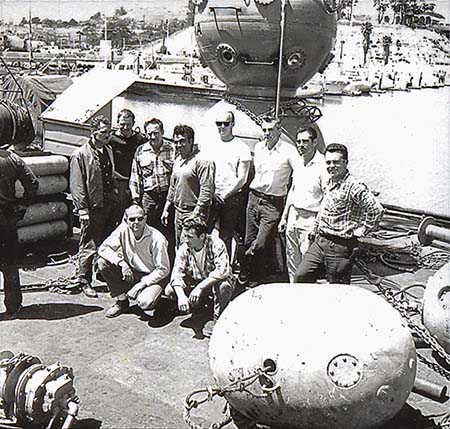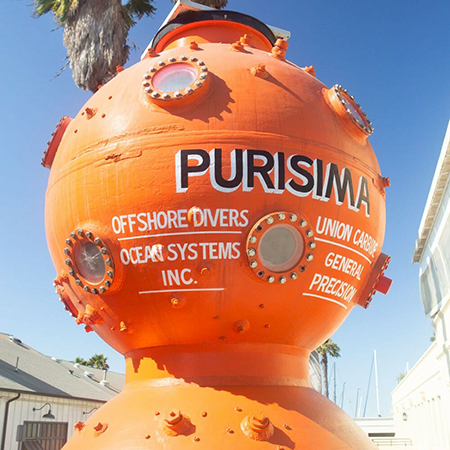Known as the birthplace of deep-water diving, Santa Barbara has profound roots in the development and implementation of specialized diving methods and equipment. To celebrate and honor this history, a bronze fine-art sculpture will be installed at the Santa Barbara Harbor, serving as a testament to the inspiring individuals and pioneering techniques.
"Deepwater commercial diving began right here in the Santa Barbara Harbor, and this statue helps honor and celebrate the divers who took mankind to deeper and deeper depths,” said SBMM Executive Director Greg Gorga. “Their hard work and innovations benefited all of us, especially the Santa Barbara Community, and I believe it is important that we recognize their achievements."
Commercial diving was revolutionized on November 3, 1962, when Santa Barbara Abalone Diver Dan Wilson dove more than 400 feet off the east end of Santa Cruz Island in the Santa Barbara Channel. He used oxy-helium (Heliox) as breathing gas instead of normal air.


Almost immediately after the historic dive, "The Santa Barbara Helium Rush" started as numerous local companies were established to support the use of helium diving and the necessary technology, which quickly expanded from the shores of Santa Barbara to the British North Sea, the Middle East, Far East, Gulf of Mexico, and Venezuela. Cal Dive was formed and operated off Stearn’s Wharf for many years. The world’s largest publicly traded dive company, Oceaneering International, had its corporate headquarters on Cota Street in the 1970s. Cal Dive and Oceaneering still trade today on the New York Stock Exchange.
Subsequently, modern diving helmets designed by the late local abalone divers, Bob Kirby and Bev Morgan (Kirby Morgan Dive Systems) are the international standard for militaries and deep-water divers worldwide to this day.
Since 1964 the mixed gas deepwater diving helmets designed and developed by the pioneer divers in Santa Barbara have become the world standard for commercial and military diving.
In 1968, Santa Barbara City College developed the only community college program in the United States to train marine technicians and divers to support this global industry.
“Santa Barbara’s cadre of hard-working, copper-collared abalone divers developed specialized techniques and equipment to conduct dives beyond 400 feet,” said Santa Barbara City College Professor Emeritus Don Barthelmess. “This included diving bells, light-weight helmets, and an international training infrastructure at Santa Barbara City College that still exists to this day.”
Santa Barbara’s abalone diving industry of past years is the key reason the city is known internationally as the birthplace of deep-water diving.
